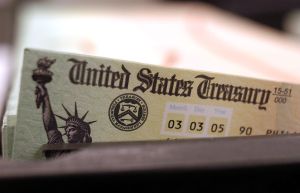While millions gaze up from the ground during Monday's solar eclipse, NASA scientist Mallory Yates will have what she calls "one of the best seats in the house" — as she helps track the celestial event at 50,000 feet in a specially-equipped jet.
Yates will be one of four NASA scientists tasked with following the eclipse's path of totality and collecting data, giving her a unique view at the spectacle.
"I'm going to have one of the best seats in the house," Yates told the BBC. "So I'm very excited to see the eclipse [and] hopefully steal a few glances up as we fly the mission."
The scientists will be split into two teams of two, each in a WB-57 aircraft. Yates is her team's equipment operator.
Using a "very, very small keyboard and a very small mouse," Yates will collect data, including on "the corona, on the part of the outside of the sun that you can't normally see or image."
"I think that there will be a lot of discoveries made with this kind of information that we'll be gathering, and it's going to open up a lot of doors of different things to look at in future eclipses," Yates said.
The teams will follow the eclipse's path of totality over Texas, approximately to the Arkansas border, before circling back to Houston.
"We'll be with it for probably six-and-a-half, seven minutes. Leading up to that, it's just a very long kind of dusk in every direction," Yates told the BBC. "Then it goes to almost a full night effect."
"Opportunities like this ... are once in a lifetime," she continued. "I'm very humbled that I get to go and be part of it."
© 2025 HNGN, All rights reserved. Do not reproduce without permission.








